Best Enduro Pedals for MTB
Everything you need to know about the best enduro pedals for MTB. We've pulled together some of the best around, just for you.
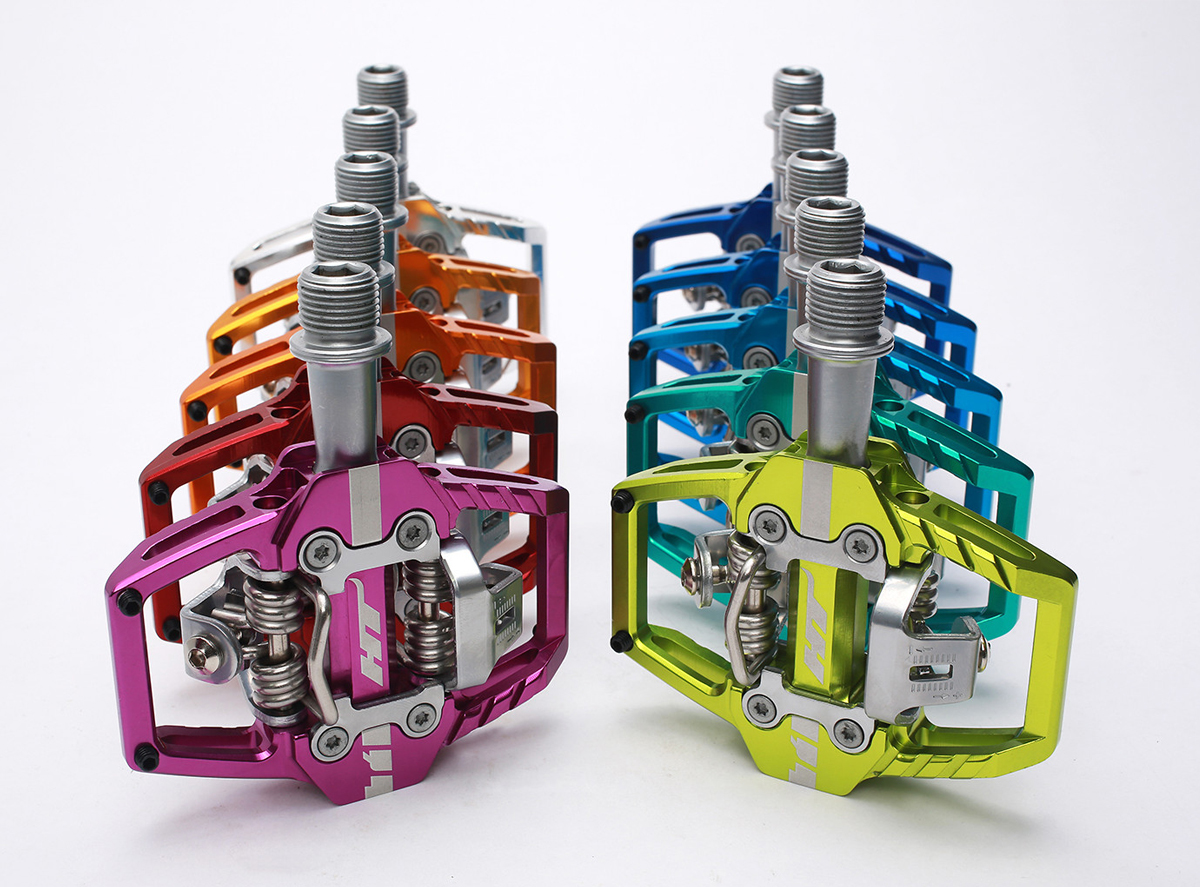
If you want maximum power transfer and secure mountain bike to rider connection then clipless pedals are the way to go. That said, it's important to choose the best pedal for the type of riding you enjoy.
This is a select handful from the shoe-grabbing selection you’ll find when shopping though. So how do you work out which gives the best foothold for your budget and your style of riding, and which should you avoid?
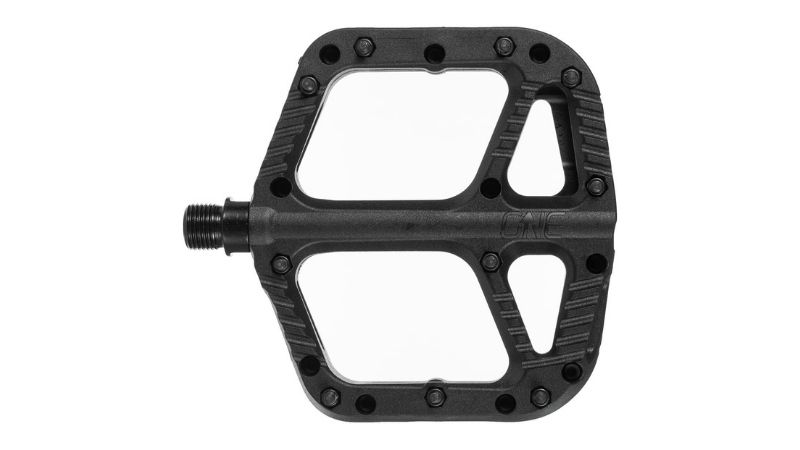
OneUp Components Composite
The best non-metal pedal you can buy
The only composite pedal on our list and one which offers terrific value. OneUp Components makes a great aluminum flat pedal with ample platform size and pin distribution. Remolding it in nylon-composite dramatically drops the price without sacrificing the many attributes which impress.
A wide platform with very thin leading edge thickness gives you are terrific stability platform on the bike.
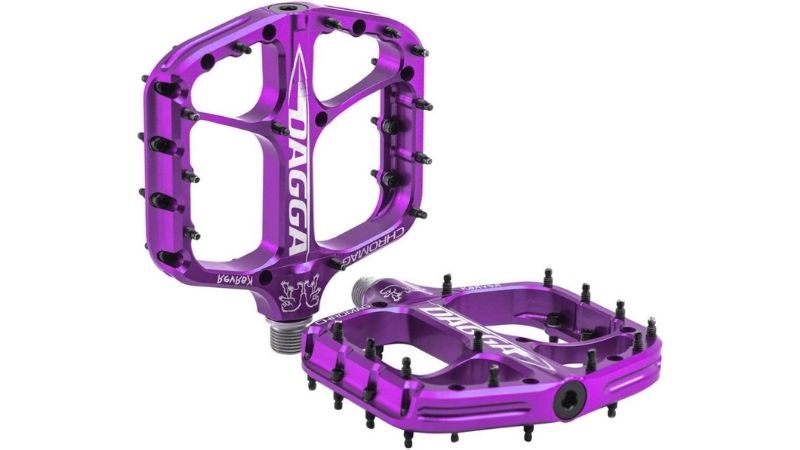
Chromag Dagga
Extreme pin length for absolute grip requirements
The Canadian flat pedals look intimidating, with their long pins. Designed to offer a large platform, with impressive axle balance thanks to a slim profile, the Daggas are engineered for extreme descending riders.
With a structure that allows the use of extra-long pins, you might risk painful shin strikes if your shoe does slip, but the theoretical grip profile is tremendous. If you are committed to riding with a heel-down technique, these large platform Chromags, with their threatening pins, will reward you with unequaled levels of metal-to-rubber grip.
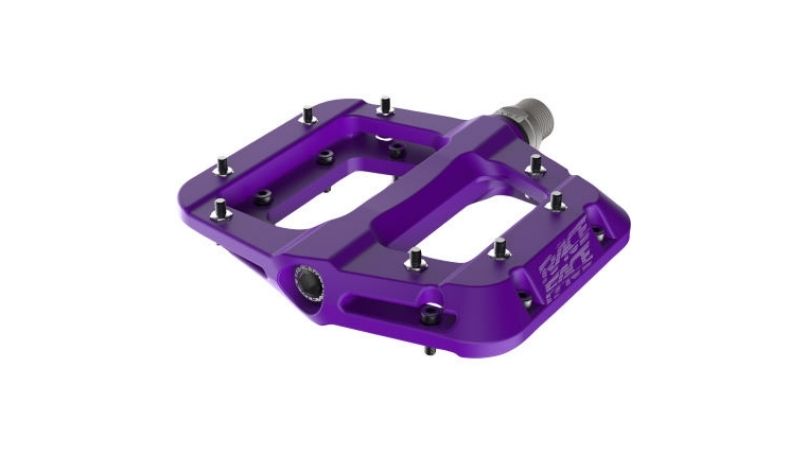
Race Face Chester Mountain Bike Pedal
Affordable and durable
If you're on a tight budget you don't need to break the bank to grab a decent and durable pair of flat enduro pedals. These nylon composite pedals from Race Face are reasonably lightweight, weighing 12.6oz, and come in a moderate size as well. The bottom loading 2.5mm hex head pins - 16 over all - are replaceable, while the pedals themselves are serviceable and straightforward to maintain.
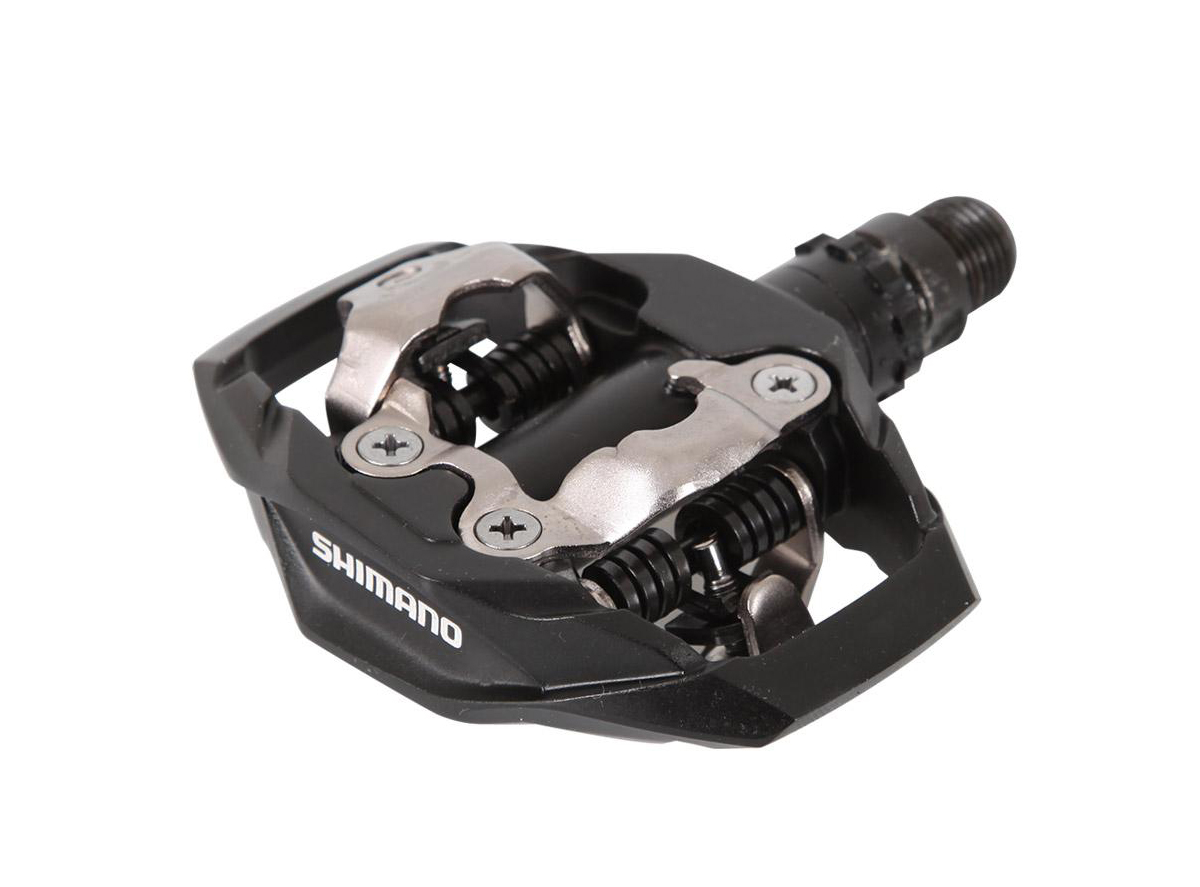
Shimano M530
Best suited for aggressive trail use with flatter soled trail/DH shoes
The 530 takes the same bombproof mechanism and axle system as the 520 and imbeds it into a mid-sized platform cage. Because the mechanism is actually inset into the body not perched on top that also means proper ‘grounded’ shoe support either side. The cage drops away front and rear so there’s no toe/midfoot support but it still makes it easier to flip kick round to engage. It also provides a bit of impact protection in front of the mechanism. This all makes the M530 more suited to aggressive trail use with flatter soled trail/DH shoes than the 520 but they are significantly heavier as a result. Engagement and release is potentially slightly tighter and 3D ‘float’ reduced as well depending on the shoe you’re using - but it’s always a positive click-in and out when it happens.
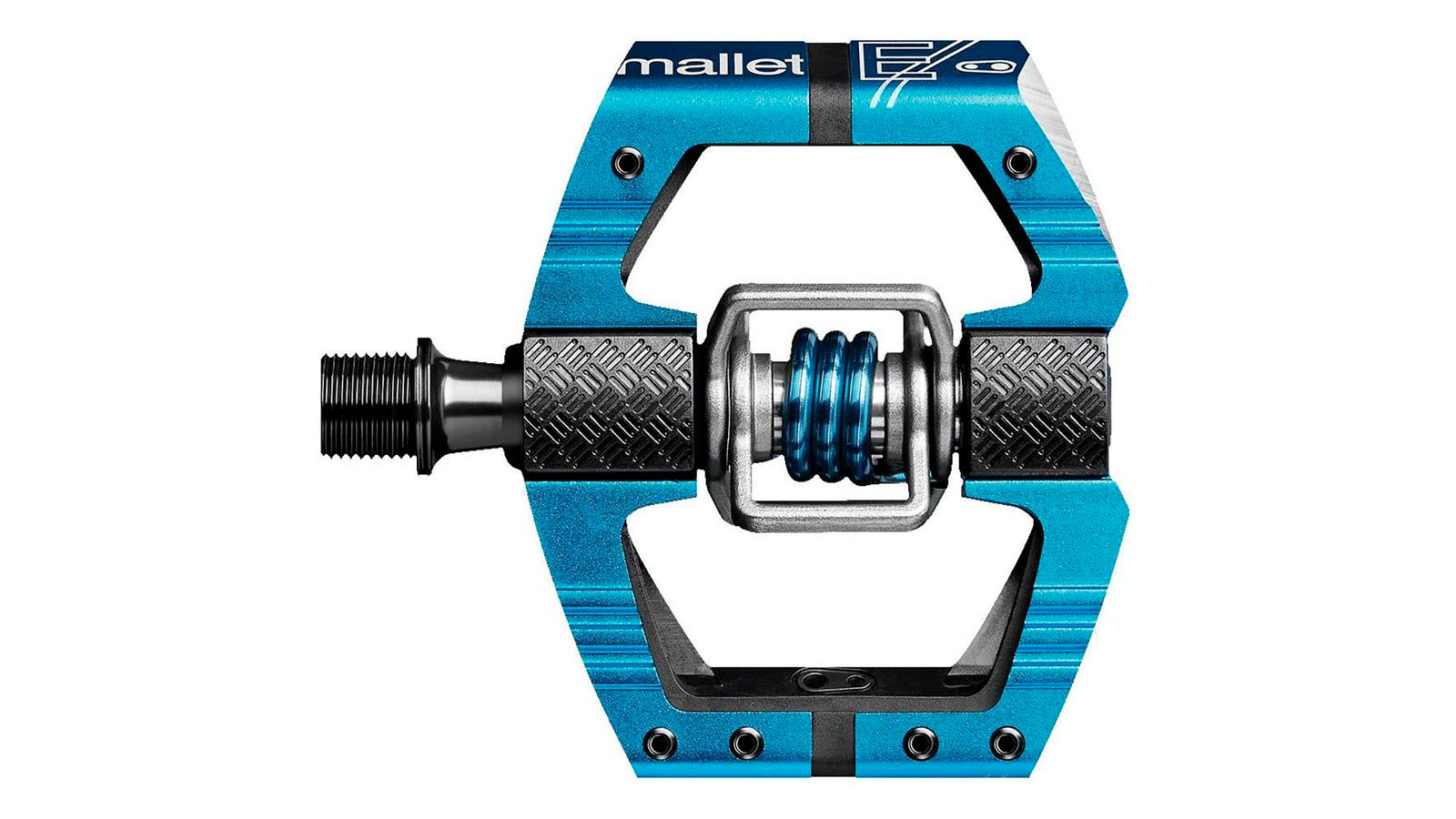
Crank Brothers Mallet E LS
A solid pedal backed by a solid five-year warranty
As with all Crank Brothers pedals the mechanism at the centre is the brilliantly simple and effective stainless steel X-Wing Eggbeater design. That means easy, soft clip-in at all angles, no matter the amount of dirt on your foot. Spring tension is fixed but choosing different cleats or switching them left to right gives between 0-10 degrees of float and 10-20 degrees release angles making them (and other CB pedals) the most adjustable around. Shoe-to-pedal clearance can be tuned with shims under the cleat or changeable ‘traction pads’ slotted into the two-tone anodised body (four colours are available) alongside the mechanism. Foot connection when clipped or unclipped can be further modified by screwing the six steel grip screws in or out of the body. This means you can have your feet locked down or skating around as you want but still get great impact and pedalling support at a reasonable weight. The LS (Long Shaft) axle gives a 57mm (rather than 2mm) extension for more leverage and crank clearance if you’re duck footed.

HT T1
A wide cage and 11 different anodized colours
HT’s T1 pedals use a specific cleat design with a broad rear shelf and won’t work with SPD compatible cleats. While the toe-down step-in feels similar to SPD both front bar and rear jaw are spring loaded with a very firm and clear click into place. Tension is adjustable, and the overall range is much higher than average.
The 68mm wide cage gives decent side and some mid-foot support and they come in 11 different anodised colours. Reliability from the mix of bushings and needle bearings is not too bad and there’s a Ti axle version that reduces the low weight even further.
How to choose
Why trust BikePerfect
There are a few questions you need to ask yourself before buying pedals but they’re all pretty straightforward. What isn’t so predictable are the answers.
1. Pedal size
The larger the pedal, the easier it is to find with your foot. Bigger pedals give more support under your shoe. Adjustable grip pins screwed into the platforms increase foot security whether you’re clipped in or not. Bigger pedals are heavier though so really big platforms are generally just used by gravity riders.
That’s led to the development of the latest category of medium or ‘enduro’ sized platform pedals like the Crank Brothers Mallet E, HT T1, Shimano 9120 XTR/8100 XT and Nukeproof Horizon CS. These use a smaller, lighter platform but often keep grip pins so they’re still useable unclipped.
2. Price
How much you’ve got to spend is always a significant factor but with pedals the gains aren’t always inline with the investment. Spending more does get you more choice. The cheapest pedals are all minimal platform ‘trail’ platforms and then price tends to increase as pedals get bigger.
Features like adjustable pins also cost more and some pedal systems use different coatings on mechanisms to potentially improve performance.
Changes in axle material - better quality steel or titanium on really fancy pedals - and more sculpted bodies reduce weight but push the price up further.
3. Functionality
As well as weight, platform size and price, the ‘feel’ and operation of some pedals can make them particularly suitable for some riders. All the Shimano compatible designs feel broadly similar and have adjustable release spring tension. Those tension ranges and clip-in/out action can vary though and there’s no way to adjust shoe-to-pedal spacing.
While some riders like a fixed foot connection, more rotational movement before the cleat unclips from the shoe (float) can reduce strain on your knees. Float varies between pedal designs but it can also be altered from 0 to 20 degrees by using different shapes of cleat, or switching the cleats from left to right.
Now that you know what you’re looking for you can hopefully narrow down suitable pedals for your budget, riding style and knee health yourself. If you want to benefit from several decades worth of riding and testing every pedal type in a vast range of conditions though, then check out the reviews of our recommended pedals below.

Guy Kesteven has been working on Bike Perfect since its launch in 2019. He started writing and testing for bike mags in 1996. Since then he’s written several million words about several thousand test bikes and a ridiculous amount of riding gear. He’s also penned a handful of bike-related books and he reviews MTBs over on YouTube.
Current rides: Cervelo ZFS-5, Specialized Chisel, custom Nicolai enduro tandem, Landescape/Swallow custom gravel tandem
Height: 180cm
Weight: 69kg
